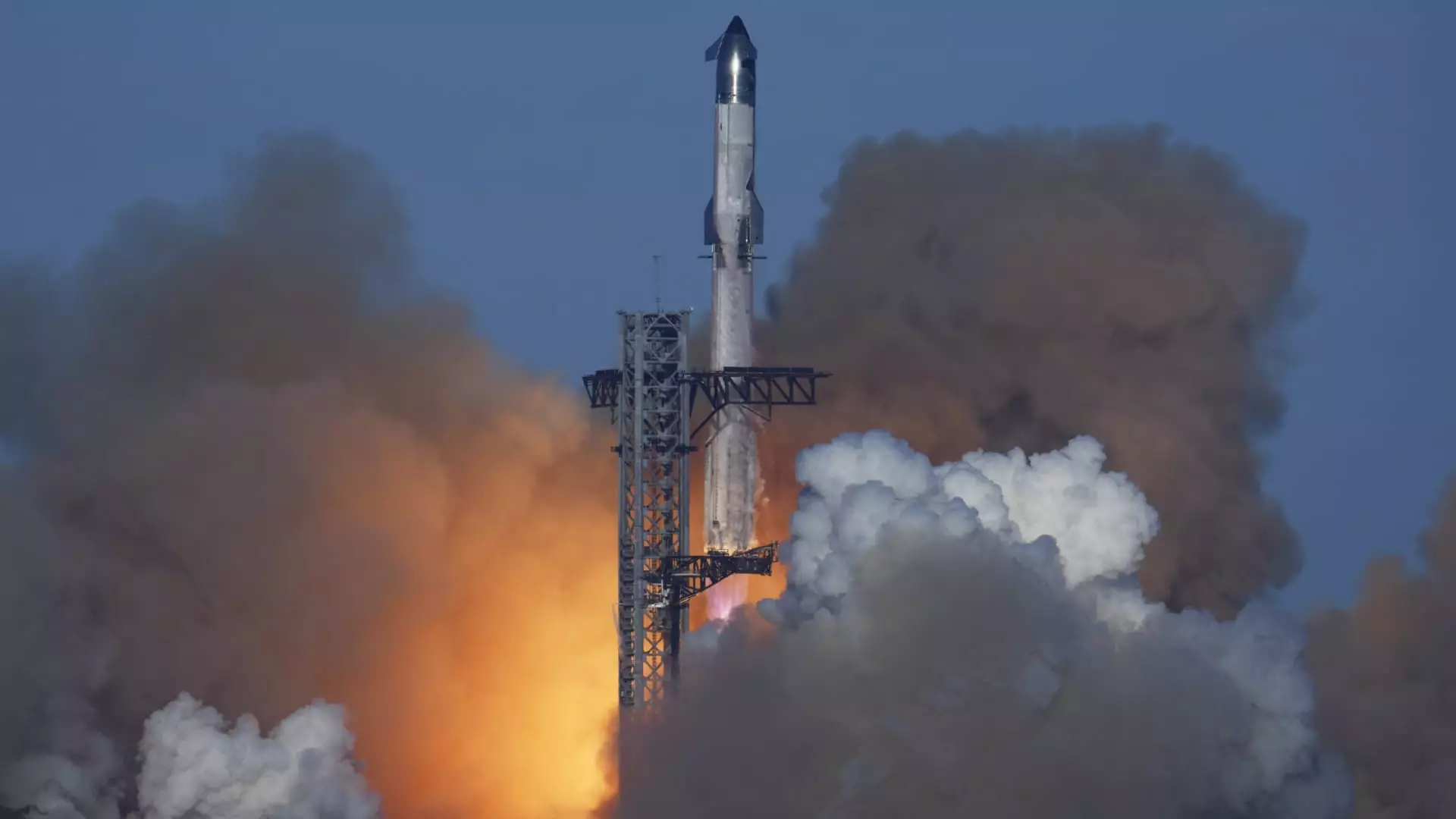In a significant move, the Federal Aviation Administration (FAA) announced on Friday that SpaceX’s Starship rocket will remain grounded until the company and the regulatory body conclude their investigation of the rocket’s midflight failure during its most recent testing phase. This incident, which led to the unfortunate necessity of diverting multiple commercial airline flights, raises questions not only about the safety protocols in place but also about the broader impact of such failures on air travel and regulatory frameworks surrounding aeronautic innovations.
The FAA’s statement emphasized the absence of any reported injuries to the public. However, it highlighted concerns regarding property damage occurring in the Turks and Caicos islands, hinting at the potential risks associated with spaceflight activities. By grounding the rocket, the FAA aims to ensure that necessary investigative measures are taken and that SpaceX implements any corrective actions before granting a new launch license, setting a precedent for accountability in aerospace endeavors.
The Ripple Effect on Commercial Airlines
The midflight explosion of the Starship rocket had immediate repercussions for various commercial airlines, including major carriers like American Airlines, JetBlue Airways, and Delta Air Lines. The diversion and delay of numerous flights due to the debris falling from the sky illustrates the interconnected nature of space and air travel. The incident serves as a reminder of the delicate balance that regulators must strike between encouraging innovation in space exploration and safeguarding the integrity of commercial air travel.
SpaceX’s acknowledgment of a fire leading to the rocket’s disintegration raises technical questions about the design and engineering of the Starship. Understandably, space travel is fraught with uncertainties; however, repeated failures can hinder progress and diminish public confidence. The images and videos circulating on social media, depicting the rocket’s dramatic demise, contribute to public apprehension about the safety of such ambitious aerospace programs.
Contradictory Claims and Transparency Issues
Adding to the confusion of the incident, SpaceX’s initial declaration that the debris fell into the Atlantic Ocean within designated hazard areas contradicted the FAA’s establishment of a “Debris Response Area.” The FAA’s proactive measures were enacted to alert nearby aircraft of potential hazards, which might imply that the situation was more serious than SpaceX initially portrayed. This clash of narratives emphasizes the importance of transparency and communication between private aerospace companies and regulatory authorities.
On Friday, updates on SpaceX’s website reflected a broader assurance, suggesting that any remaining debris would have landed in the planned hazard zones. However, the absence of specific and consistent information in their communications raises doubts regarding the reliability of the information provided by SpaceX.
As the investigation unfolds, it will be crucial for both SpaceX and the FAA to navigate this situation with diligence. The grounding of Starship serves as an essential pause for reflection on safety protocols and incident response strategies. To ensure the continued advancement of space exploration while safeguarding public welfare, a collaborative approach between innovators and regulators is necessary. Only through uncompromising transparency and rigorous investigation can trust be built back into the burgeoning realm of commercial spaceflight.

